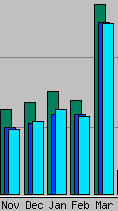Sacramento, CA….Volunteers and staff of the Red Cross Capital Region will Drop, Cover, and Hold On this morning as they participate in the annual Great California ShakeOut earthquake drill – an exercise which has grown to the world’s largest of its kind since its inception in 2008.
Capital Region staff join over 9.5 million Californians and over 24 million worldwide registered to participate in this year’s ShakeOut, an exercise which is designed to raise awareness of earthquake risks and increase overall earthquake preparedness.
“In California, the risk of earthquakes is always present so it is critical that people understand how to be prepared for when – not if – the next quake will strike,” said Kathleen Weis, CEO of the Red Cross Capital Region Chapter. “While the Sacramento and the surrounding areas may not be earthquake hot spots, earthquake safety and preparedness is a necessity for all Californians.”
The American Red Cross is encouraging people to register and participate in the Great ShakeOut Earthquake Drill October 17 at 10:17am, local time. Last year, 19.5 million people in the U.S. and around the world learned what to do in case of an earthquake and practiced it by participating in the event.
People can take part by registering at ShakeOut.org and practicing themselves or with others wherever they happen to be at the time.
Earthquake Safety Tips
The Red Cross has several tips and resources to help people learn what to do before, during and after an earthquake.
If someone is in inside when the shaking starts:
They should drop to the ground, take cover and hold on. Move as little as possible. Try to protect the head and torso. If sitting at a desk or table, get under it and hold on to it until the shaking stops. Otherwise, drop wherever they are.
If someone is in bed, stay there, curl up and hold on. Protect the head with a pillow.
Stay inside until the shaking stops and it is safe to exit.
Use stairs to exit the building rather than an elevator.
Be aware that fire alarms and sprinkler systems frequently go off in buildings during an earthquake, even if there is no fire.
If someone is outside when the shaking starts:
Move as little as possible. Find a clear spot away from buildings, power lines, trees and streetlights and drop to the ground until the shaking stops.
If in a vehicle, pull over to a clear location and stop. Avoid bridges, overpasses and power lines if possible. Stay inside with the seatbelt fastened until the shaking stops.
If a power line falls on the vehicle, do not get out. Wait for assistance.
If in a mountainous area or near unstable slopes or cliffs, be alert for falling rocks and other debris. Landslides are often triggered by earthquakes.
Download the American Red Cross Earthquake App
The free American Red Cross Earthquake App for iPhone and Android mobile devices gives users instant access to local and real-time information in order to help them make crucial decisions. People can view the app in English or Spanish based on user settings.
Features of the app include:
Simple steps and checklists people can use to create a family emergency plan;
Earthquake epicenter location, impact magnitude and local geographical impact data provided by the U.S. Geological Survey;
One touch “I’m safe” messaging that allows users to broadcast reassurance to family and friends via social media outlets that they are out of harm’s way;
Toolkit with flashlight, strobe light and audible alarm; and
Locations of open Red Cross shelters.
The Earthquake App can be found in the Apple App Store and the Google Play Store for Android by searching for American Red Cross or at redcross.org/mobileapps. Additional earthquake safety information is available at redcross.org/earthquake.
For more information about ShakeOut, visit www.shakeout.org.
About the American Red Cross:
The American Red Cross shelters, feeds and provides emotional support to victims of disasters; supplies nearly half of the nation’s blood; teaches lifesaving skills; provides international humanitarian aid; and supports military members and their families. The Red Cross is a charitable organization — not a government agency — and depends on volunteers and the generosity of the American public to perform its mission. The Capital Region serves a twenty-four county territory including Alpine, Amador, Butte, Calaveras, Colusa, El Dorado, Glenn, Lassen, Modoc, Nevada, Placer, Plumas, Sacramento, San Joaquin, Shasta, Sierra, Siskiyou, Stanislaus, Sutter, Tehama, Trinity, Tuolumne, Yolo, and Yuba counties. For more information, visit www.redcross.org/capitalregion or follow us on Twitter @RedCrossCRC.


